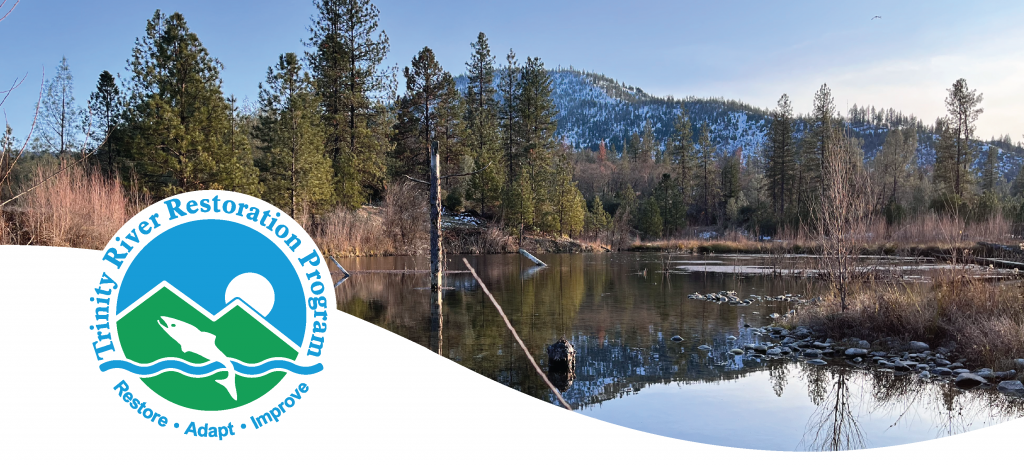
River Riffle Newsletter – July
Contents:
- Trinity River: Current Conditions
- 2022 Annual Report
- 2023 Watershed Grantees
- Oregon Gulch Begins Channel Cut and In-River Work
- Featured Article – July: Sediment and Summer Thunderstorms
- Trinity River Watershed : Plant Spotlight – July: California Hazel
- Upcoming Meetings and Events
Trinity River: Current Conditions
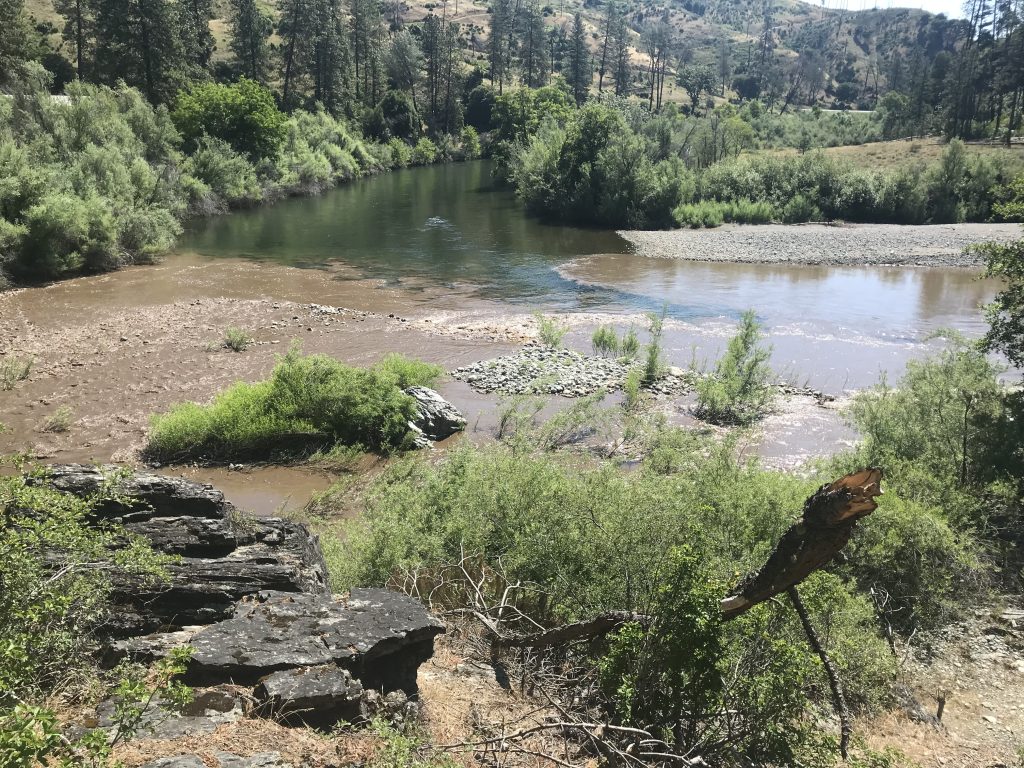
Concerning news of spring chinook infected with an undiagnosed gill infection have been reported at higher rates than years prior and has the attention of agencies, anglers and those on the river. Although the average rates and the location of these reports have been concerning, some daily rates of reported infections have been alarming and have definitely garnered the attention of regulatory agencies. The evidence of disease is somewhat surprising because upper river temperatures are not exceptionally high. A key differentiating factor hypothesized by fish biologists, may be that the heavy sediment and ash loads from thunderstorms in June may have damaged the gills of the spring chinook that were making their way upriver at that time, stressing them and thus making them vulnerable to disease.
[Photo Credit: Charlie Holthaus, North Fork Trinity Confluence with the Trinity River on June 13, 2023]2022 Annual Report
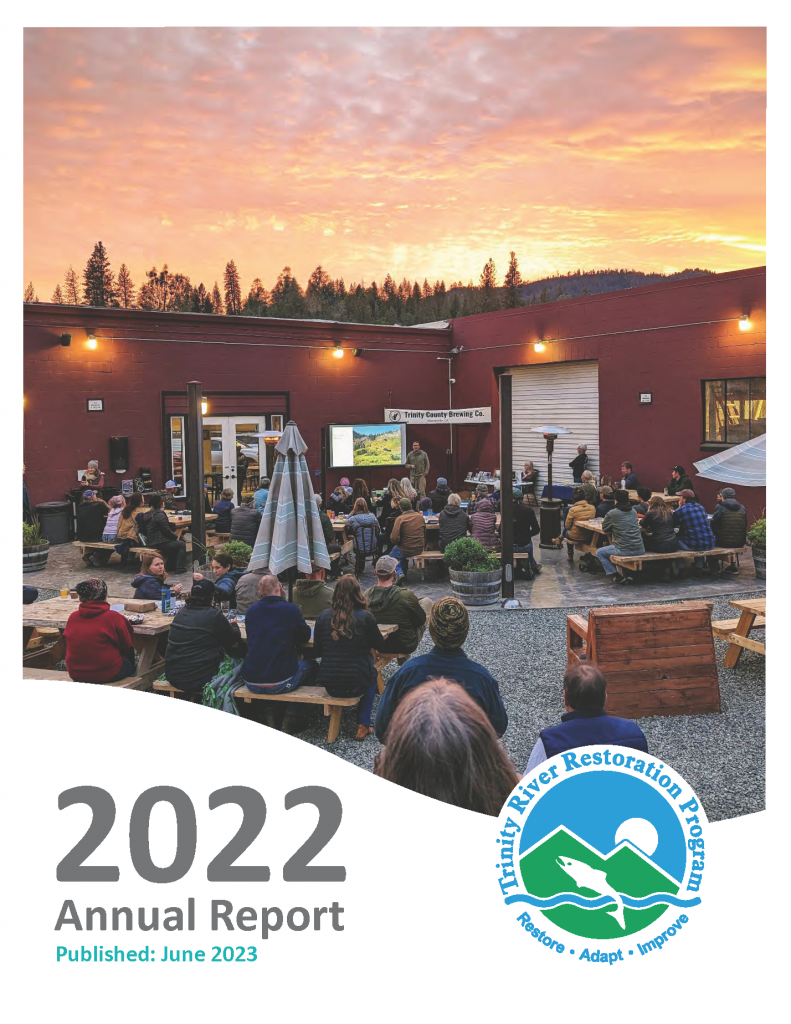
The 2022 Trinity River Restoration Program Annual Report is complete and ready for consumption in two formats. A downloadable PDF and an interactive ArcGIS StoryMap. Please click either link below to learn about the Program and it’s activities in 2022.
2023 Watershed Grantees
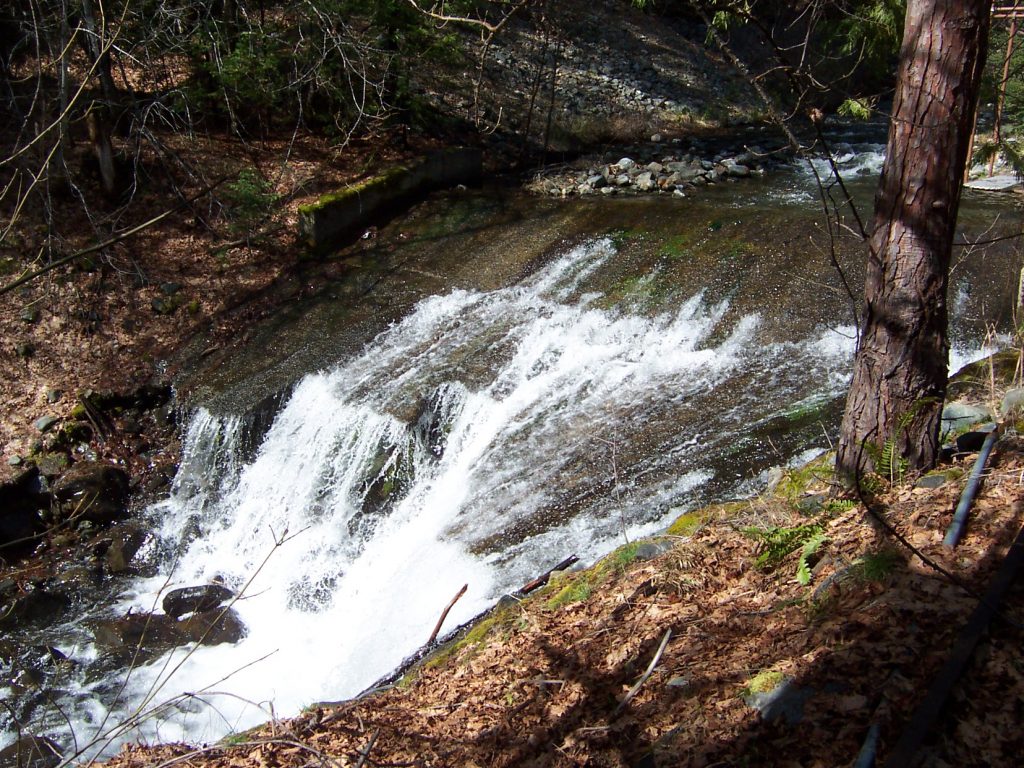
On June 16, The Bureau of Reclamation and the U.S. Department of Agriculture Natural Resources Conservation Service announced 11 projects totaling $6 million to be awarded as part of three Klamath Basin Salmon Restoration grant programs. Four of the 11 aforementioned projects will be administered in the Trinity River watershed. The 4 projects selected will improve aquatic habitat by reducing fine sediment delivery, improving fish passage, and pursuing increases to tributary flows in the dry season in tributaries of the Trinity River.
Photo of the East Weaver Creek Dam provided by Northwest California Resource Conservation &
Development Council.
Oregon Gulch Begins Channel Cut and In-River Work
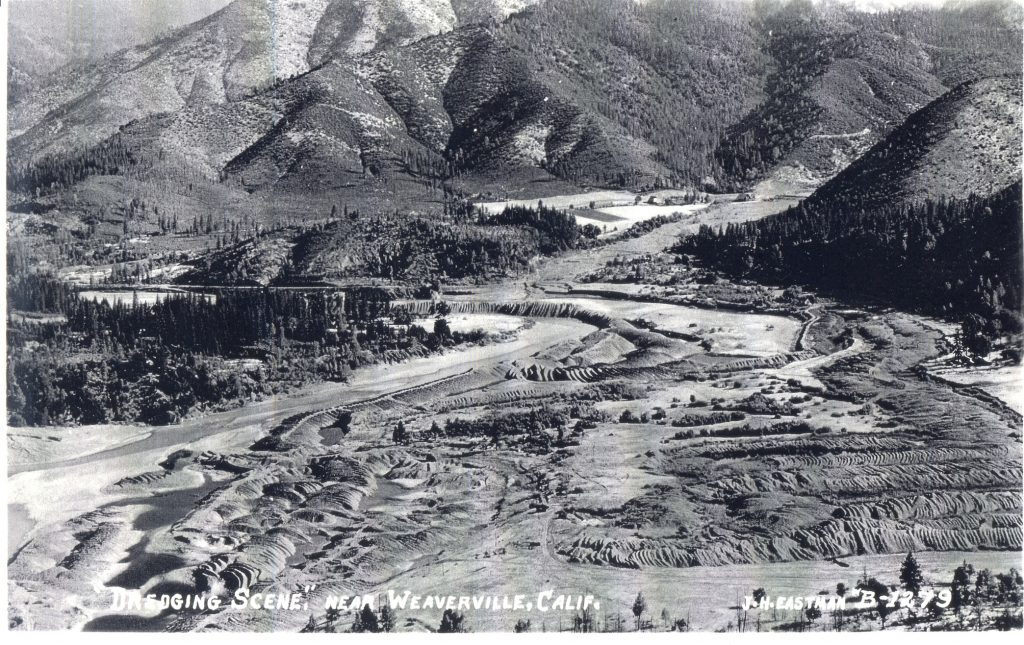
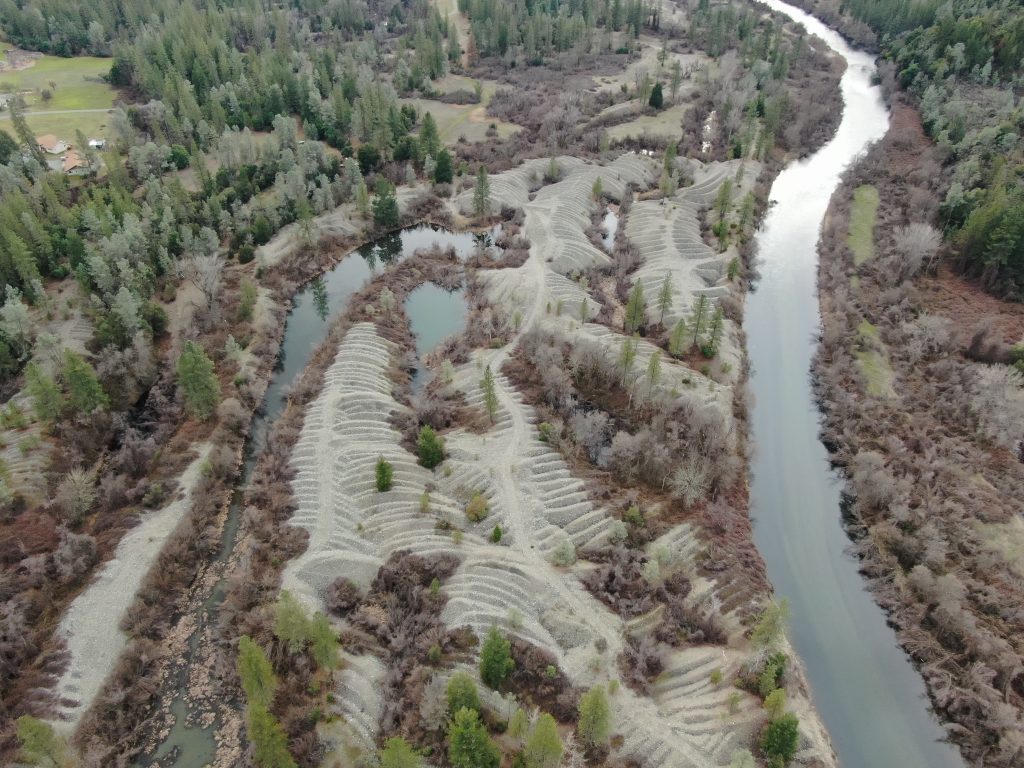
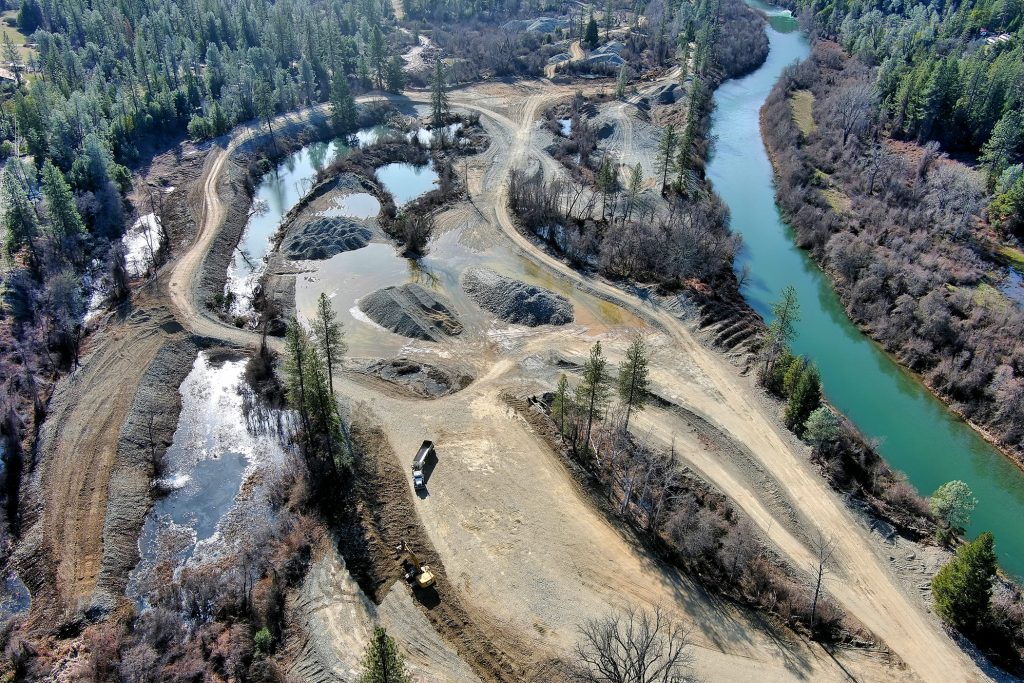
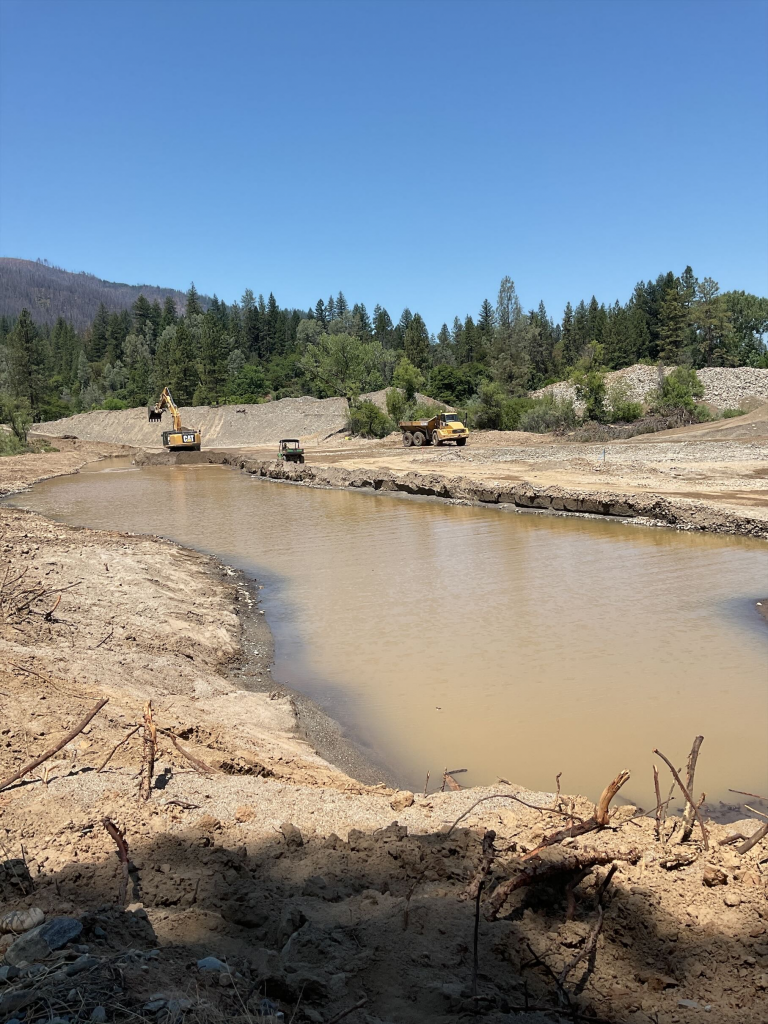
The Oregon Gulch restoration project, located in Junction City, continues into Phase II of rehabilitation. During Phase I, crews removed several hundred thousand cubic yards of mechanically placed tailings and freed up the single largest area of accessible floodplain upriver of the Hoopa Valley. The project now focuses on bed and bank excavation, in-channel work, floodplain construction, habitat enhancements and site revegetation. Due to available funding, workforce efficiency, and public support, all construction operations (with the exception of revegetation) are scheduled to be completed by October 15.
During this phase people who are planning to recreate on this portion of the river should expect to see dramatic changes as the project site develops. Daily, even hourly changes near the construction site should be anticipated and people should be responsible and aware of one or a combination of the following on work days during this time period;
- Signage diverting rafters and other water craft from hazards – if there are marked signs in view please pay attention
- Technicians in the water continuously monitoring for compliance with turbidity standards
- Equipment operating within the river channel
The Restoration Program recognizes that seeing large equipment in the river channel and turbid waters can be alarming. Our contractors and the Program follow strict protocol and are committed to ensuring the safety of wildlife, recreators and our employees. If you have questions or concerns regarding this or any other restoration initiative, please reach out to us at info@trrp.net or 530-623-1800.
Featured Article: Sediment and Summer Thunderstorms
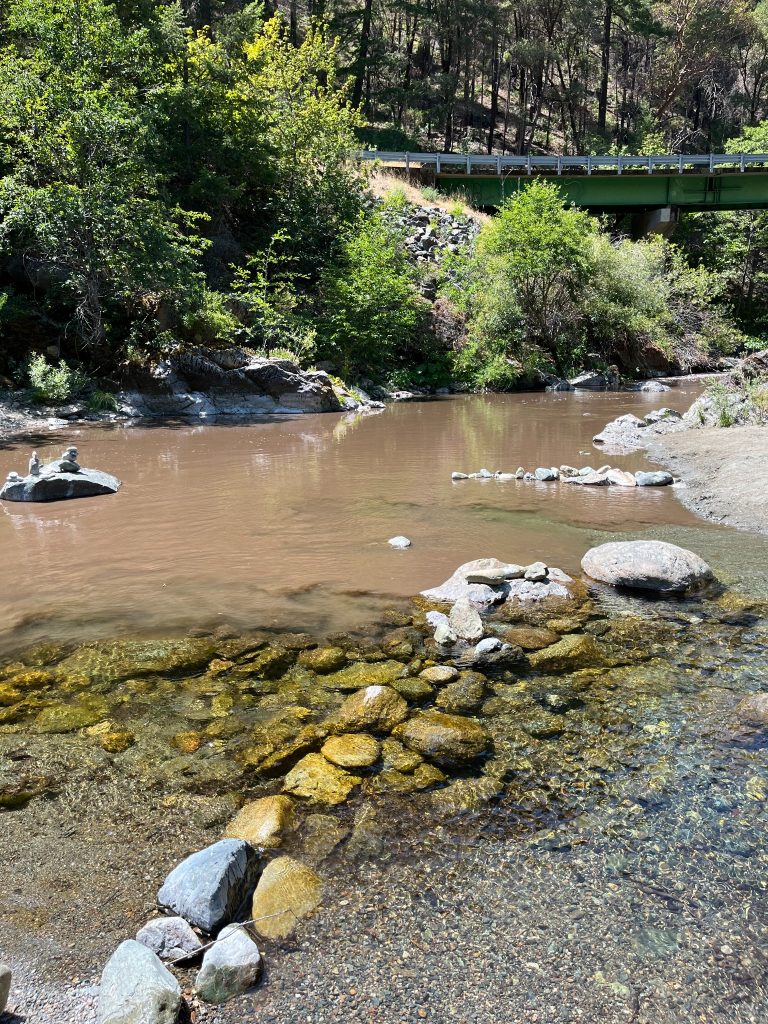
Thunderstorms and sudden cloudbursts are common in the mountains during the summer, yet following a wildfire, they can have dramatic results. This is especially true after a dry year without significant rainfall. A single downpour can set a mountain stream roaring, sending a puff of suspended sediment downstream to wash into the river below. Usually this passes quickly, leaving little trace. Significant rainfall and subsequent runoff normally occur in fall or winter. However, an unexpectedly intense storm directly following a wildfire in 2022 lead to a natural disaster on the Klamath River.
Photo: A similar thunderstorm cell pushed sediment downstream the North Fork Trinity River in August of 2022. In contrast to the Klamath incident, the Trinity River did not see a major fish kill. Fish biologists believe that this difference is due to the timing of the fires and storm events in each watershed. In the Trinity River instance the fire had been in prior years and in the Klamath River instance the storm event happened on a fire scar in the same year. [Mike Dixon, Reclamation]
Trinity River Watershed: Plant Spotlight
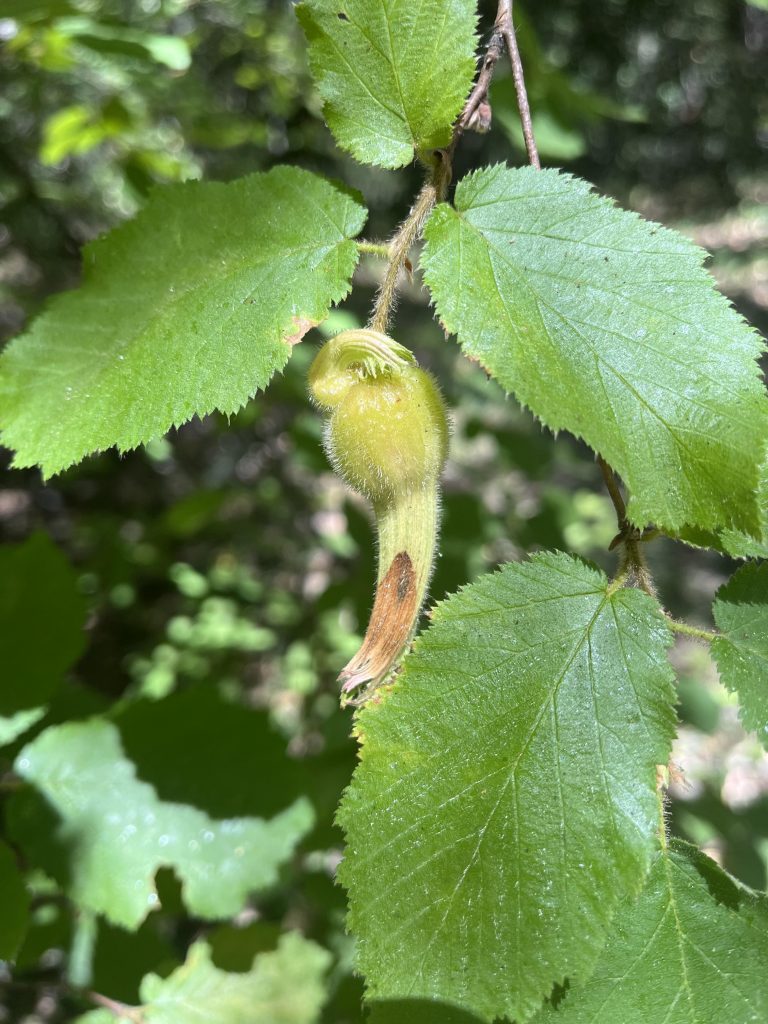
California hazel
(Corylus cornuta subsp. californica)
The historical relationship between humans and hazels is much more multi-faceted than mere consumption. Native Americans, including the Hupa, Yurok, and many other local tribes that share a range with this plant, have long utilized hazels in basketry and fiber-making. In the Hupa language, there is a different word for each of these applications. K’ila:jonde’ translates to ‘hazel’ or ‘hazelnut’, while tł’ohsch’il’e:n means ‘hazel brush switches’ or ‘hazel bush’. If separated from the plant, a hazel stick itself is referred to as miq’ik’itł’oy’, and the verb for twisting a hazel withe to make it flexible is k’iq’e:n.
Upcoming Meetings and Events
For a full list of events, click to view the TRRP Calendar.
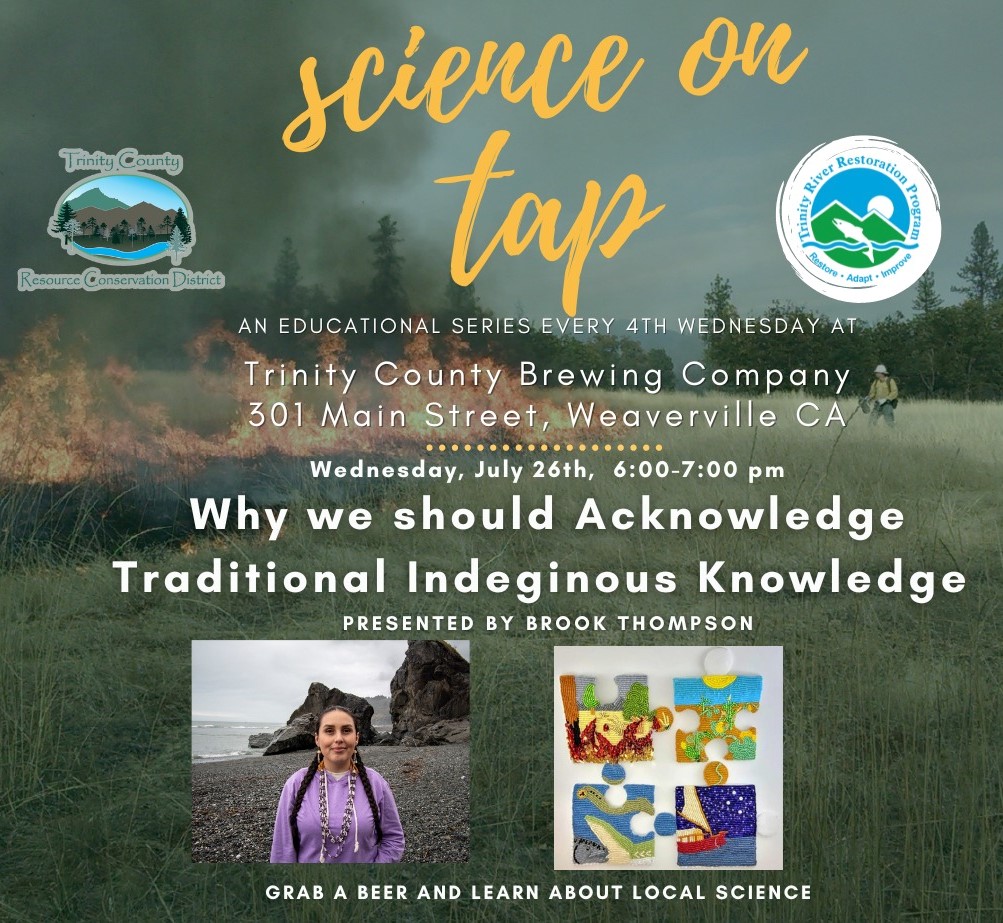
July 26, 6pm – Science on Tap
Trinity County Brewing Company
This month, we are excited to have Brook Thompson as our guest speaker. Brook is a Yurok and Karuk Native in her second year of Ph.D. studies in Restoration Engineering for the Yurok Tribe. Her presentation is titled “Why we should Acknowledge Traditional Indigenous Knowledge.” Through her presentation, she invites us to delve into the history of knowledge suppression among California Natives and emphasizes the significance of listening to local tribes in restoration efforts.
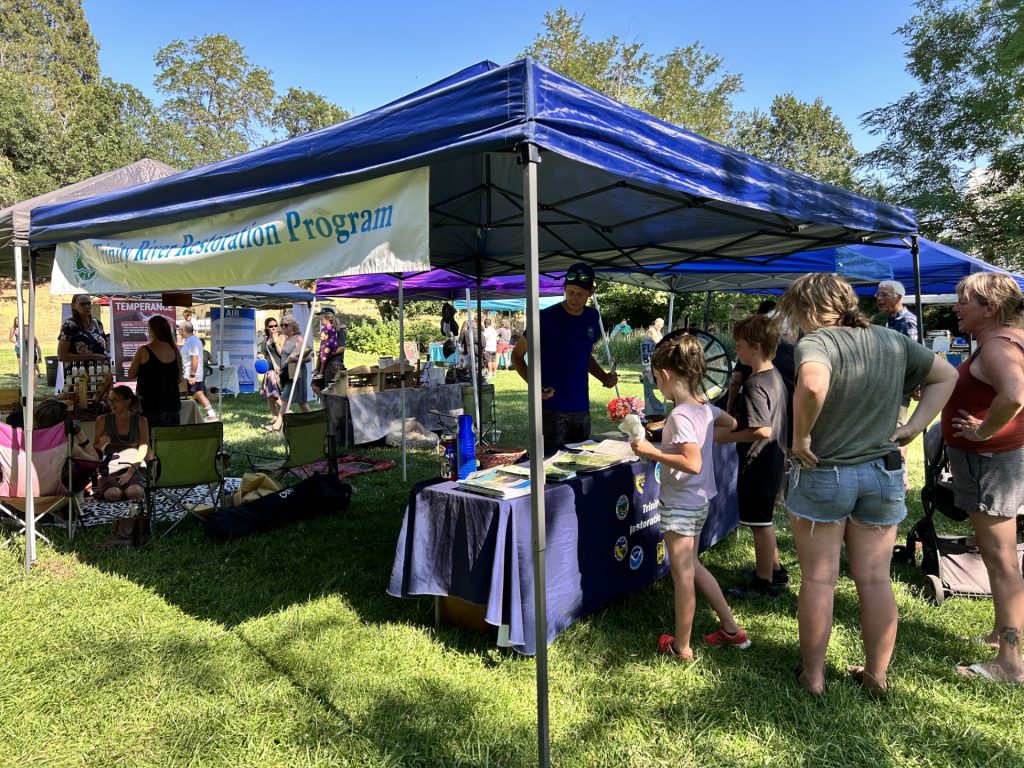
August 16, 4-7pm – Weaverville Farmers Market
We’ll have a booth at the Weaverville Farmers Market on August 16. Come see us, sign up for our outreach opportunities and ask us questions about restoration activities.
August 2023 – Hoopa Ceremonial Flows
Flow increases and dates will be announced as further details are provided.
The Hoopa Valley Tribe has requested the Bureau of Reclamation to increase releases from Lewiston Dam to the Trinity River in support of the Tribe’s biennial Boat Dance Ceremony in late August, 2023.
The ceremonial flows are separate from the Trinity River restoration flows. To watch an ABC10 video about the biennial Hoopa Ceremonial Dances please click here.
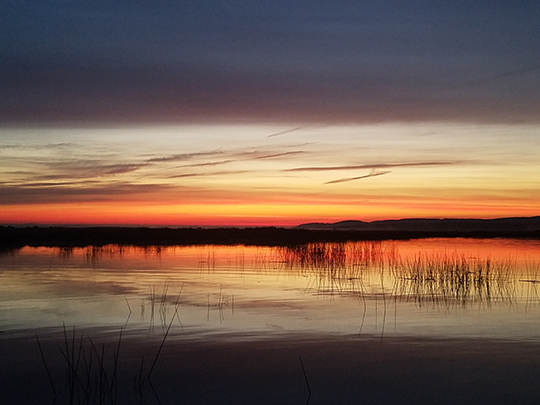
September 13, TBD – WIIN Act Quarterly Update Meeting
Virtual: Teams meeting call-in info TBD
Reclamation’s Bay Delta Office will hold a quarterly meeting to provide an update on the development of the Biological Assessment for the 2021 Reinitiation of Consultation on the Long-Term Operation of the Central Valley Project and State Water Project, pursuant to the Water Infrastructure Improvements for the Nation (WIIN) Act. The meeting will be held virtually on Microsoft Teams.
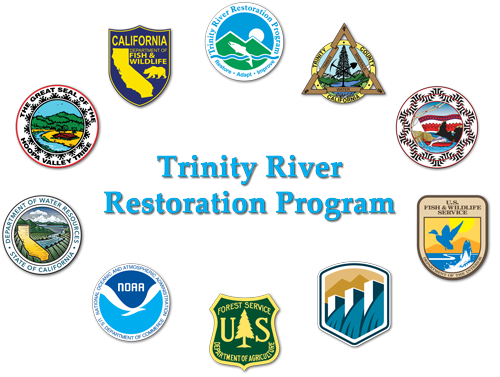
September 13-14, All Day – Quarterly TMC Meeting
In Person: Weitchpec, CA Virtual: Teams meeting call-in info TBD
Contact Us
Call Us: 530-623-1800 Email Us: info@trrp.net
